 In the United States, the number of patients diagnosed with diabetes (both Type 1 and Type 2) has doubled over the last decade. Type 2 accounts for 90-95% of all diabetes diagnoses. Over eight percent of the U.S. population is believed to have diabetes, and of those with it, an estimated 27% do not even know it. Monitoring blood glucose levels is critically important and must be done multiple times a day, which can be painful and cumbersome. Google has just announced a prototype device that retrieves information about blood sugar directly from the eyeball, via a contact lens.
In the United States, the number of patients diagnosed with diabetes (both Type 1 and Type 2) has doubled over the last decade. Type 2 accounts for 90-95% of all diabetes diagnoses. Over eight percent of the U.S. population is believed to have diabetes, and of those with it, an estimated 27% do not even know it. Monitoring blood glucose levels is critically important and must be done multiple times a day, which can be painful and cumbersome. Google has just announced a prototype device that retrieves information about blood sugar directly from the eyeball, via a contact lens.
Typically, a small blood sample is taken from the fingertip using a combination of a lancet, strips, and a blood glucose meter. For those who have had diabetes for a long time or require more frequent testing, it can be hard to find a spot that will bleed easily. There are embedded blood glucose monitors, but they require a device to be taped to the skin or work on a belt and require outpatient surgery for replacement. Unfortunately, because properly monitoring blood sugar is such a large commitment, many people are not doing it right. Those who choose not to manage their disease properly are at a much greater risk of developing blindness, kidney failure, or having their lower extremities amputated.
Many researchers have been seeking alternative ways to monitor glucose without the use of blood, in order to make it easier for diabetics to stay on top of their sugar levels. Some newer noninvasive glucose tests include checking saliva, urine, or tears. Tears can provide an incredibly accurate measurement, but it is not always easy to get a sample. Google’s solution to using tears is minimally invasive and can provide constant monitoring of glucose levels.
A prototype soft contact lens has been outfitted with a micro-scale computer chip, sensor, and an antenna. Once every second, the sensor monitors the glucose levels in the tears and transmits the information to a wireless device, such as a smart phone. This information could also be sent directly to the person’s doctor. Future prototypes may also include a tiny LED which would immediately alert the wearer that sugar levels are either too low or too high and to take immediate action. The technology within the lens does not impact the field of vision and should not be much different than wearing traditional contact lenses.
Currently, scientists at Google are in talks with the FDA about taking this prototype to the next level. It will be years before the contact will be available for clinical use. Google is reaching out to potential partners in order to make this a feasible option for diabetics. This has the potential to revolutionize how millions of people with diabetes manage their disease and give them the best chance to protect their eyesight, limbs, and life.
- See more at: http://www.iflscience.com/health-and-medicine/new-smart-contact-lens-could-monitor-glucose-diabetics#overlay-context=














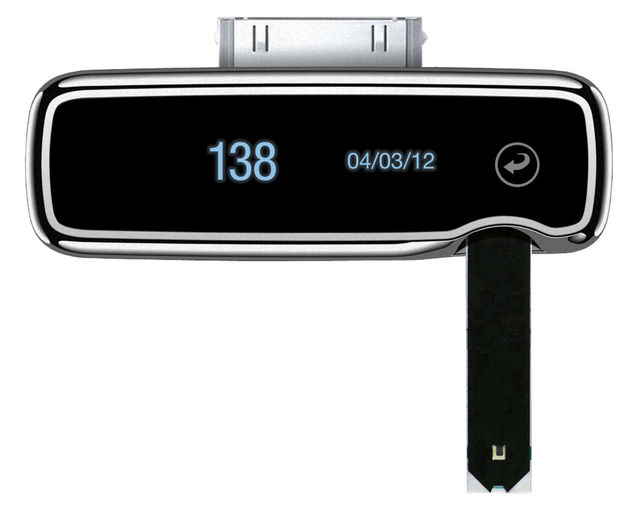 I've been using the iBG Star now for about a week and a half. One of the things that I love about it is the fact that it’s a standalone meter all by itself. You do not need to have it hooked to your phone or other supported Apple device until your ready to sync the information.
I've been using the iBG Star now for about a week and a half. One of the things that I love about it is the fact that it’s a standalone meter all by itself. You do not need to have it hooked to your phone or other supported Apple device until your ready to sync the information. get phone cases that allows you to keep the monitor connected to the phone all the time, which is handy but you still have to carry the lancets, and test strips so why not just keep the whole thing together?
get phone cases that allows you to keep the monitor connected to the phone all the time, which is handy but you still have to carry the lancets, and test strips so why not just keep the whole thing together? One thing that I did notice that has me a bit put off is that the iBG Star seems to be off by sometimes up to 200 points. I have been using my Bayer Contour USB Glucose Monitor along with the iBG Star and at my highest reading both machines read differently. The iBG Star read 486 where my Contour USB read 268.
One thing that I did notice that has me a bit put off is that the iBG Star seems to be off by sometimes up to 200 points. I have been using my Bayer Contour USB Glucose Monitor along with the iBG Star and at my highest reading both machines read differently. The iBG Star read 486 where my Contour USB read 268.  Getting into the app itself, I must say is very clean and easy to navigate. You have some fun features like being able to change the background on the app, as well as tailoring it to your needs by inputting your highs and lows, as well as your insulin etc..
Getting into the app itself, I must say is very clean and easy to navigate. You have some fun features like being able to change the background on the app, as well as tailoring it to your needs by inputting your highs and lows, as well as your insulin etc...PNG) disconnected or connected.
disconnected or connected.  Another feature that I really like about iBG Star is that you have the ability to share your meter readings via email with your doctors. This provides them with detailed information that allows you to get instant results, especially if you are being monitored closely for other Diabetic complications.
Another feature that I really like about iBG Star is that you have the ability to share your meter readings via email with your doctors. This provides them with detailed information that allows you to get instant results, especially if you are being monitored closely for other Diabetic complications. 



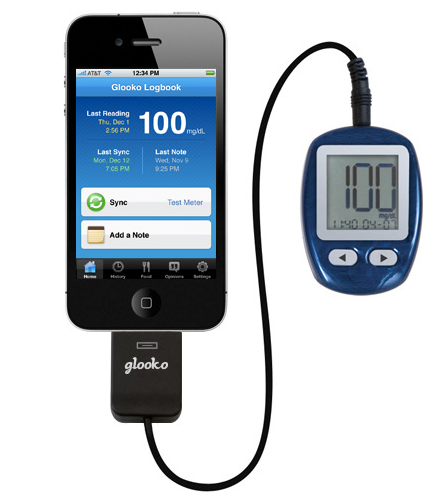 be available to iPhone users.
be available to iPhone users.  new Android App. I must say so far I'm a bit disappointed (so far) with the outcome of the Android version of Glooko. You see unlike the iPhone single sync cord version (left), the Android sync version (right) requires 2 parts. These parts are a square box that plugs into the earphone jack of your phone or mobile device and has a cord that plugs into that, then into your meter. The other thing about the Android version is that it is not powered by the phone or the tester. It requires a large button cell battery, and the unit must be manually turned on in order to begin the sync with your phone.
new Android App. I must say so far I'm a bit disappointed (so far) with the outcome of the Android version of Glooko. You see unlike the iPhone single sync cord version (left), the Android sync version (right) requires 2 parts. These parts are a square box that plugs into the earphone jack of your phone or mobile device and has a cord that plugs into that, then into your meter. The other thing about the Android version is that it is not powered by the phone or the tester. It requires a large button cell battery, and the unit must be manually turned on in order to begin the sync with your phone.  glucose meters supported. The other thing that I was pleased to see was that unlike the iPhone sync which needed a whole different attachment or meters that had IR (infrared) beaming abilities, it is now built into the Android version.
glucose meters supported. The other thing that I was pleased to see was that unlike the iPhone sync which needed a whole different attachment or meters that had IR (infrared) beaming abilities, it is now built into the Android version. 
 Cell phones and computer programs give specific advice and support to people with diabetes, but do not do much to improve their health or quality of life, new research suggests.
Cell phones and computer programs give specific advice and support to people with diabetes, but do not do much to improve their health or quality of life, new research suggests.
 In a study of
In a study of  If you're pulling and all-nighter to finish a term paper, a new parent up all night with a fussy baby, or simply can't sleep like you once could, then you may be snoozing on good health. That's because new research published in The FASEB Journal used mice to show that proper sleep patterns are critical for healthy metabolic function, and even mild impairment in our circadian rhythms can lead to serious health consequences, including diabetes and obesity.
If you're pulling and all-nighter to finish a term paper, a new parent up all night with a fussy baby, or simply can't sleep like you once could, then you may be snoozing on good health. That's because new research published in The FASEB Journal used mice to show that proper sleep patterns are critical for healthy metabolic function, and even mild impairment in our circadian rhythms can lead to serious health consequences, including diabetes and obesity. Seeing a doctor within a month of an
Seeing a doctor within a month of an 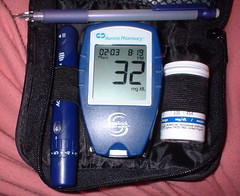 Tight control of
Tight control of 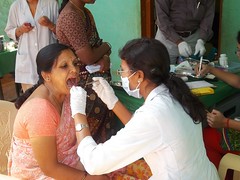 Only one in ten are studying prevention while almost two thirds focus on drug therapy
Only one in ten are studying prevention while almost two thirds focus on drug therapy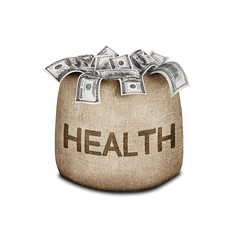 Patients with type 2 diabetes who follow the same strict diet required for those who undergo bariatric surgery are just as likely to see a reduction in blood glucose levels.
Patients with type 2 diabetes who follow the same strict diet required for those who undergo bariatric surgery are just as likely to see a reduction in blood glucose levels. Depression in a group of Medicare recipients ages 65 years and older appears to be associated with prevalent mild cognitive impairment and an increased risk of dementia, according to a report published Online First by Archives of Neurology, a JAMA Network publication.
Depression in a group of Medicare recipients ages 65 years and older appears to be associated with prevalent mild cognitive impairment and an increased risk of dementia, according to a report published Online First by Archives of Neurology, a JAMA Network publication.
 Young adults with Type 1 diabetes are much more likely to die than their peers because they are not getting the healthcare they need to manage their condition.
Young adults with Type 1 diabetes are much more likely to die than their peers because they are not getting the healthcare they need to manage their condition.  Amelia Lily, popstar and children’s ambassador for Diabetes UK, said, "As someone who has Type 1 diabetes myself, I know that no family should have to struggle to get the good care their child deserves. But that’s what thousands of families with children with Type 1 diabetes have to do year in, year out.
Amelia Lily, popstar and children’s ambassador for Diabetes UK, said, "As someone who has Type 1 diabetes myself, I know that no family should have to struggle to get the good care their child deserves. But that’s what thousands of families with children with Type 1 diabetes have to do year in, year out.  Women who were diagnosed with gestational diabetes during
Women who were diagnosed with gestational diabetes during  Stretch marks during and after pregnancy are inevitable. It occurs as a result of the stretching of the skin up to its limits. As the skin tends to stretch to house the growing fetus, the collagen fibers tend to compensate to bring skin together. This is the reason why there are white streaks around the mother’s tummy. This does not only happen to mothers but to those who have suffered from a drastic change in weight. While this seems to be a big problem to a lot of people, there are actually things that one can do to be able to get rid of the scars it leaves.
Stretch marks during and after pregnancy are inevitable. It occurs as a result of the stretching of the skin up to its limits. As the skin tends to stretch to house the growing fetus, the collagen fibers tend to compensate to bring skin together. This is the reason why there are white streaks around the mother’s tummy. This does not only happen to mothers but to those who have suffered from a drastic change in weight. While this seems to be a big problem to a lot of people, there are actually things that one can do to be able to get rid of the scars it leaves. 






